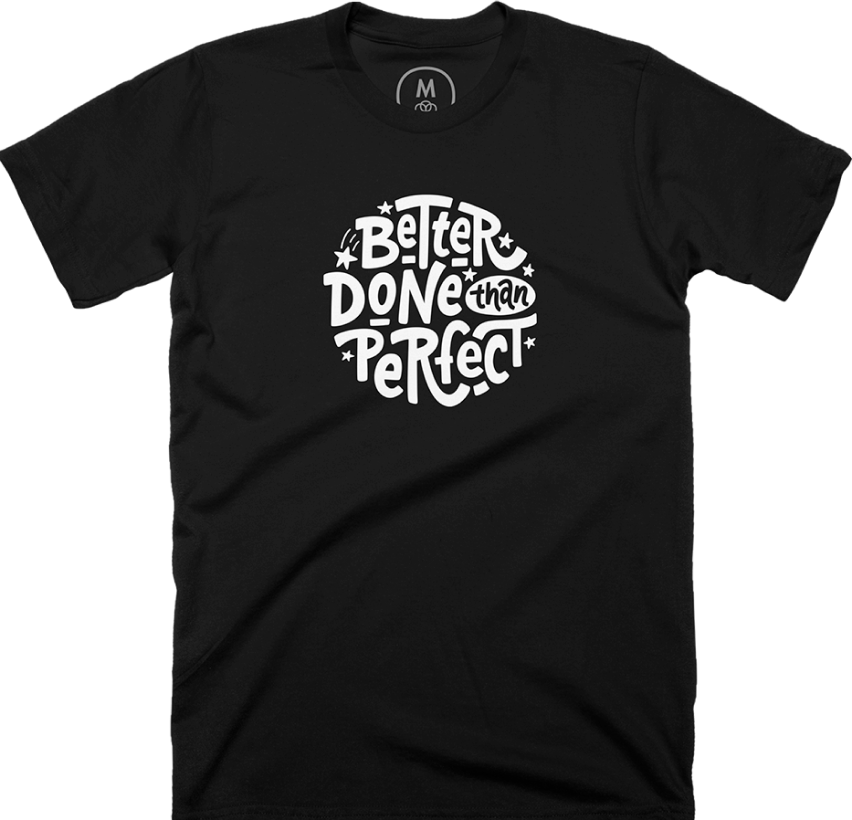Marc Thomas, head of growth at Powered by Search, started as a magazine journalist and got into startups when working with clients on communications products. While there, he started a SaaS — a real-time survey company.
In 2020, he left that company for Powered by Search. He was burned out and he left the company in a solid place where he could confidently move on. At Powered by Search, he found a new kind of excitement in working with varying mid-to-late-stage clients in different contexts.
For Marc, the head of growth position entails both helping the company itself grow as well as their clients:
“My role at Powered by Search is probably half and half. Half of the time I work on growing the agency, getting leads that are qualified. Then the other half of the time I work with clients on positioning, messaging, and getting them ready to work with SEO and PPC teams.”
Positioning and the step-by-step framework
According to Marc, most people think of positioning abstractly. As he defines it, positioning is:
“Being able to articulate to somebody, even if it’s just to yourself, how you are seen within the total market of all of your competitors, in the way that you solve the acute pain points of your specific customers differently to your competitors.”
Jane points out that while that sounds simple, there’s usually a lot of work required to get to the clarity Marc described. At Powered by Search, they typically deliver a single page, including a short positioning statement. They arrive at this deliverable by following a seven-step process, on a 90-minute call with several members from the organization:
“We usually try to get the CEO. We try to get the CMO if there is one. We’ll get customer success people and we’ll get salespeople and some marketers potentially. Basically, anyone who has contact with the customer or experience trying to communicate with the customer. We want six, seven people max on that call.”
The framework of steps is no secret — Powered by Search has the canvas right on their site (linked in the show notes below). The high-level steps are:
- Their Desire (Fears, Frustrations, Wants, Aspirations): for your ideal customers, what are their fears, frustrations, wants, and aspirations?
- The Promise: what is the promise that all of your competitors make to your target customer?
- The Premise: a belief that is universally accepted by your market.
- Difference Chunking: how do you solve this problem in a way that is unique?
- Market Intimacy: what have you done to help your customers solve their problems in a way that’s unique to you?
- The Positioning Statement: a simple statement that isn’t copywriting, summarizes steps before.
- The Alternative: what would happen to your customer if they continue to do nothing about that problem or try to solve them how they have been?
Jane, skeptical of simple solutions, asked for some examples and Marc expands on how they would walk through step 1, desire, for an anonymized company that has clients in the wealth management sector. They came to a very specific target customer description:
“Your target customer is wealth management firms in the US with $25-500 million assets under management for wealth managements, usually between small to medium size with approximately 10 people working there. They’re interested in growing revenue, adding new clients, and delivering a better client experience.”
He describes some of the additional points that will lead to more context. For one, they’ll look at important job titles for this user. In another, they focus on the user, not the buyer. Other questions asked to define customers in this “desire” step are:
“Who are they? What are they doing that is inefficient? Why haven’t they fixed it?”
Is it really that simple?
While overall the framework is simple, Jane admits that some of the questions might be hard to answer, even for the group of six or seven people that might be in the meeting. Using Userlist as an example, while they serve SaaS companies, they could be classified as many different things depending on the features.
To get clarity on narrowing a direction, Marc recommends evaluating potential opportunities in different markets by assigning a literal dollar amount to the opportunity. Some of the more lucrative opportunities will rule themselves out based on the mechanics of acquisition, logistics, etc. — but the exercise helps assign a quantitative component to assist in narrowing down a focus. Generally, Marc advises:
“You shouldn’t pursue multiple markets especially as an early-stage, SaaS startup. Focus on one thing.”
Additionally, the positioning of the “all-in-one” solution typically is left for bigger, later-stage companies. Jane and Marc discuss Intercom as an example in the context of Userlist. Intercom frequently changes their positioning to attract new customer segments and can likely do so because of their size, Marc says:
“If you can afford to spend a lot of money to acquire a lot of money, you’re much more likely to throw money at the wall and see what sticks.”
Becoming a generalist is a luxury that larger companies tend to have:
“I wish we could be a generalist. The reality is that for marketing, particularly positioning in the early days, you have to pick a horse and go after that.”
Deeper dive into the steps
Marc then loops back and provides more detail about several steps following the detailed breakdown of step one earlier.
Step two is “the promise” and this is all still about your competitors’ positioning at this point:
“I ask for one or two words here every time. I’ll give you all of the classics — ‘simple’, ‘easy-to-use’, ‘cheap’, ‘efficient’, ‘cheaper’, ‘more productive’, ‘connected’, ‘better optimized’.”
Step three is “the premise” and because this is the belief that’s universally held in the market, Marc likes to think of it in terms of a joke:
“Thinking back to the legal example that I mentioned, the joke that they said was, ‘Hey, running a law firm would be great if it wasn’t for the lawyers.’ Now that’s important because it tells you something about pain.”
Getting to the “real heart” of the premise is important, but it doesn’t have to be shared publicly — ultimately this is valuable insight when it comes time to build your messaging.
Step four is “difference chunking”, or how your company gets results different from anyone else. Powered by Search says there are five ways to do that — strategy, structure, systems, shared values, and style. From the five, it’s important to focus on one or two:
“This often plays out in systems or structure. It might be expressed as, ‘Hey, we don’t just sell the product, we help people implement it after and then we continually check in with them.’ Many SaaS businesses will find that unattractive but the reality is the majority of fast-growing SaaS companies have a pretty aggressive customer success program in place. And so that was a clear one because most of the other companies in the industry sold the product and then went on to the next deal.”
Step five is “market intimacy”, or how you have helped mitigate your customers’ mistakes. Walking through an example of a client that was helping their customers more like a partner than simply a vendor. Their positioning statement wasn’t about the technology itself, but how they used the technology to help ease their customers’ pain:
“Ultimately that’s differentiated in a way that is meaningful because nobody else can copy your relationships. People can copy features. People can copy pricing models. But they can’t copy the way that you relate to your customers and the way that your customers trust you.”
Step six, “the positioning statement”, is the result of all the work prior. Marc advises not to think about copywriting in the session at all. That can be done later. For the session, the main goal is to leave with a shared understanding and direction.
The implementation, post-canvas
Marc maintains that 90 minutes is truly enough to fill out the canvas once you have the right people in the room:
“For 90 minutes, we focus on the best of the customer pain points with people from all over the business who have very different experiences of the customers. In the end, you have this perfect jewel of a positioning statement.”
Implementation, after the canvas has been completed, is a different story. Applying the resultant positioning to marketing, search, the website, etc. are tasks that Powered by Search can help with, but that’s the work that follows the 90-minute alignment session.
Finally, positioning isn’t meant to be set in stone and can change in response to changing needs, business goals, customers, etc.
Jane presents a relevant example — whether Userlist might entertain focusing on a smaller segment of customers raving about company accounts. Marc suggests that she might position around that targeted market, grow in that market, and change positioning slightly to grow in adjacent markets once growth tapers off.
Final advice
Do differentiate.
“Choose something that is truly differentiated from your competitors.”
Don’t neglect to put your positioning statement into action.
“Don’t just leave your positioning statement in a document. Make sure that it goes into every project that you start. Ask, ‘Is this aligned to our positioning? Or are we moving away from it?’”
Thanks for listening! If you found the episode useful, please spread the word on Twitter mentioning @userlist, or leave us a review on iTunes.


